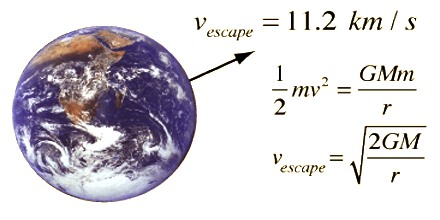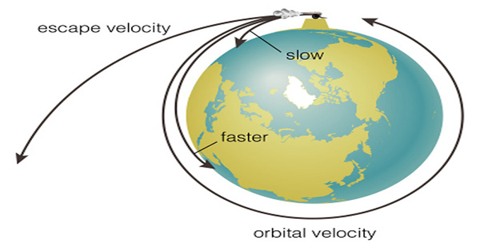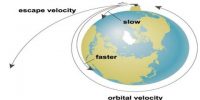Escape Velocity
If we drop a thing from up it falls downward. If we throw a stone vertically upwards, it rises to a maximum height and then returns to the ground due to the gravitational attraction. If the velocity of projection is increased, maximum height of rise also increases. But if we project the stone with a particular velocity that it overcomes the gravitational attraction and never comes back to the earth, then that particular velocity is called escape velocity.
Definition: The minimum velocity with which an object must be projected as to enable it just to overcome the gravitational attraction and does not come back to the earth is called escape velocity. It is denoted by vE.

Example: Escape velocity is defined to be the minimum velocity an object must have in order to escape the gravitational field of the earth, that is, escape the earth without ever falling back. Escape velocity is the speed that an object needs to be traveling to break free of a planet or moon’s gravity well and leave it without further propulsion. For example, a spacecraft leaving the surface of Earth needs to be going 7 miles per second, or nearly 25,000 miles per hour to leave without falling back to the surface or falling into orbit.
















